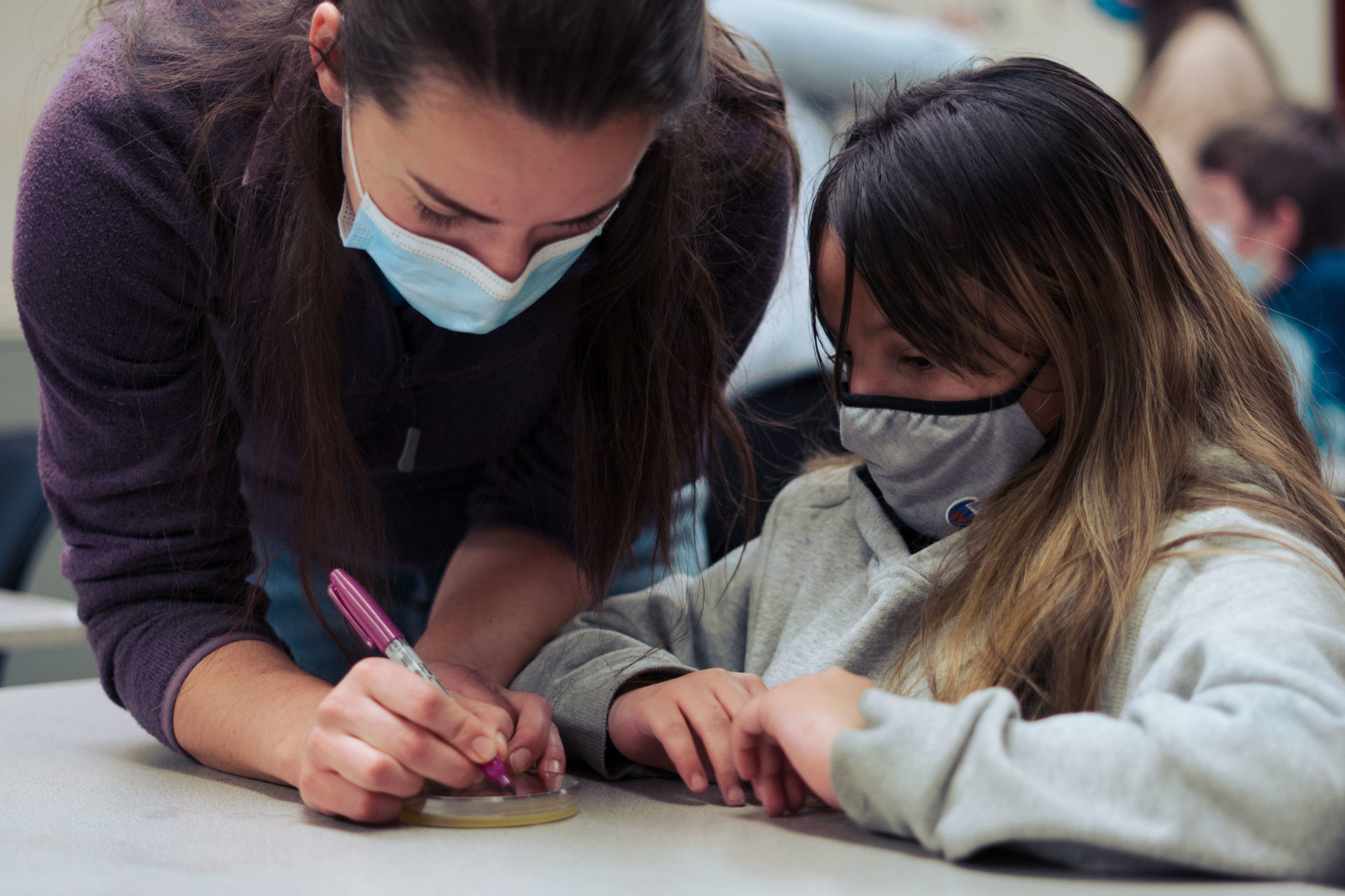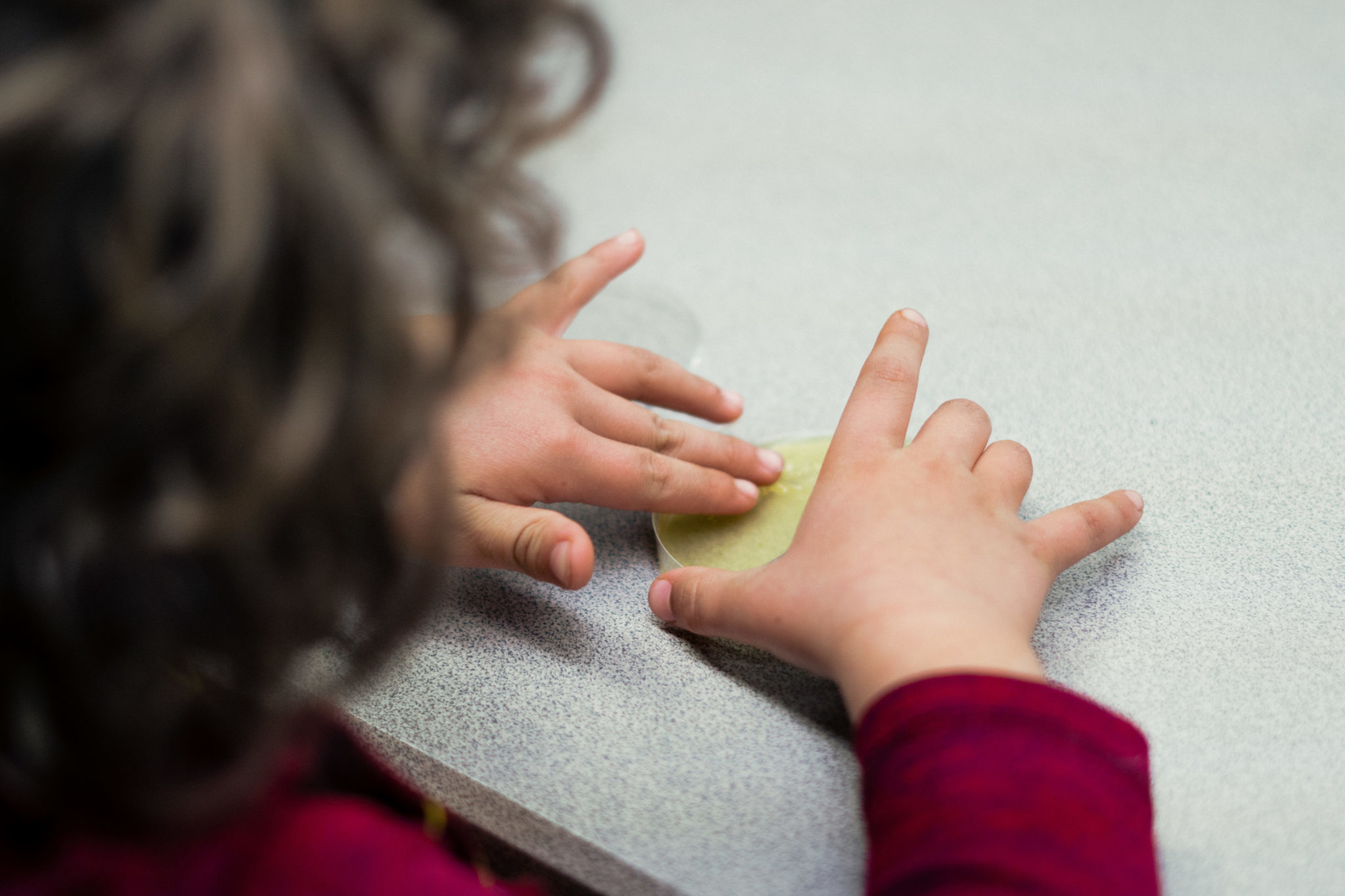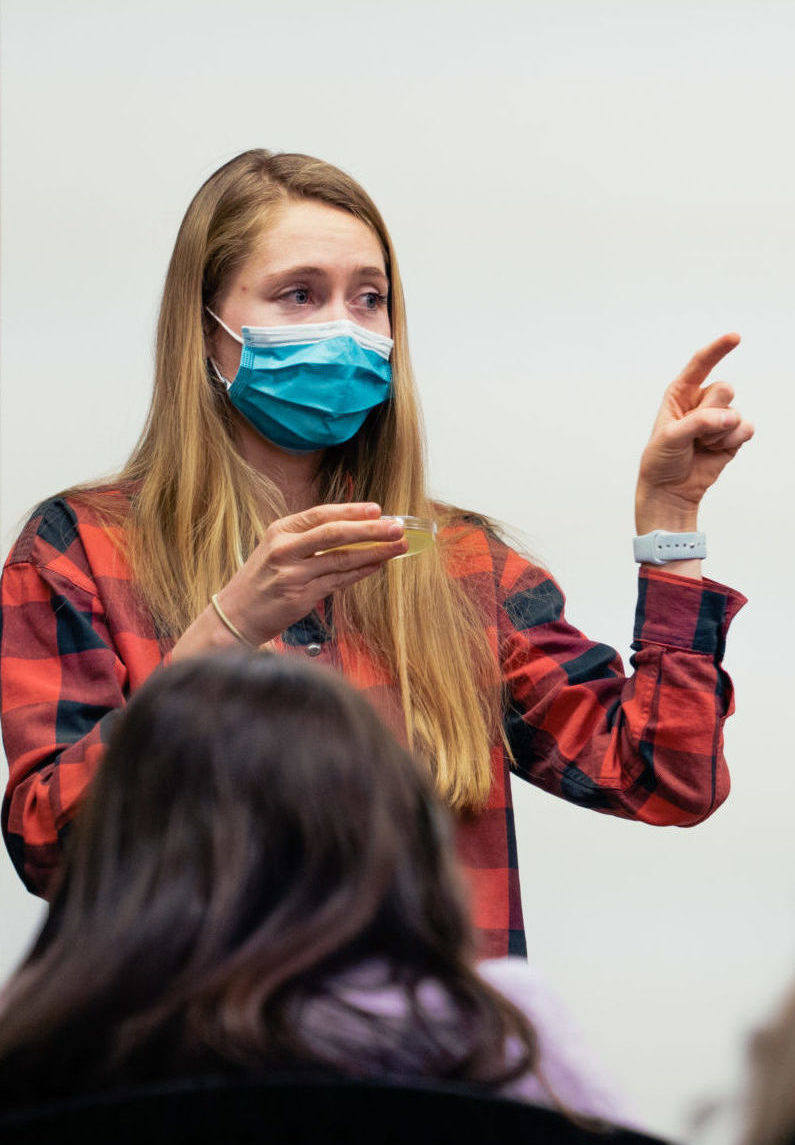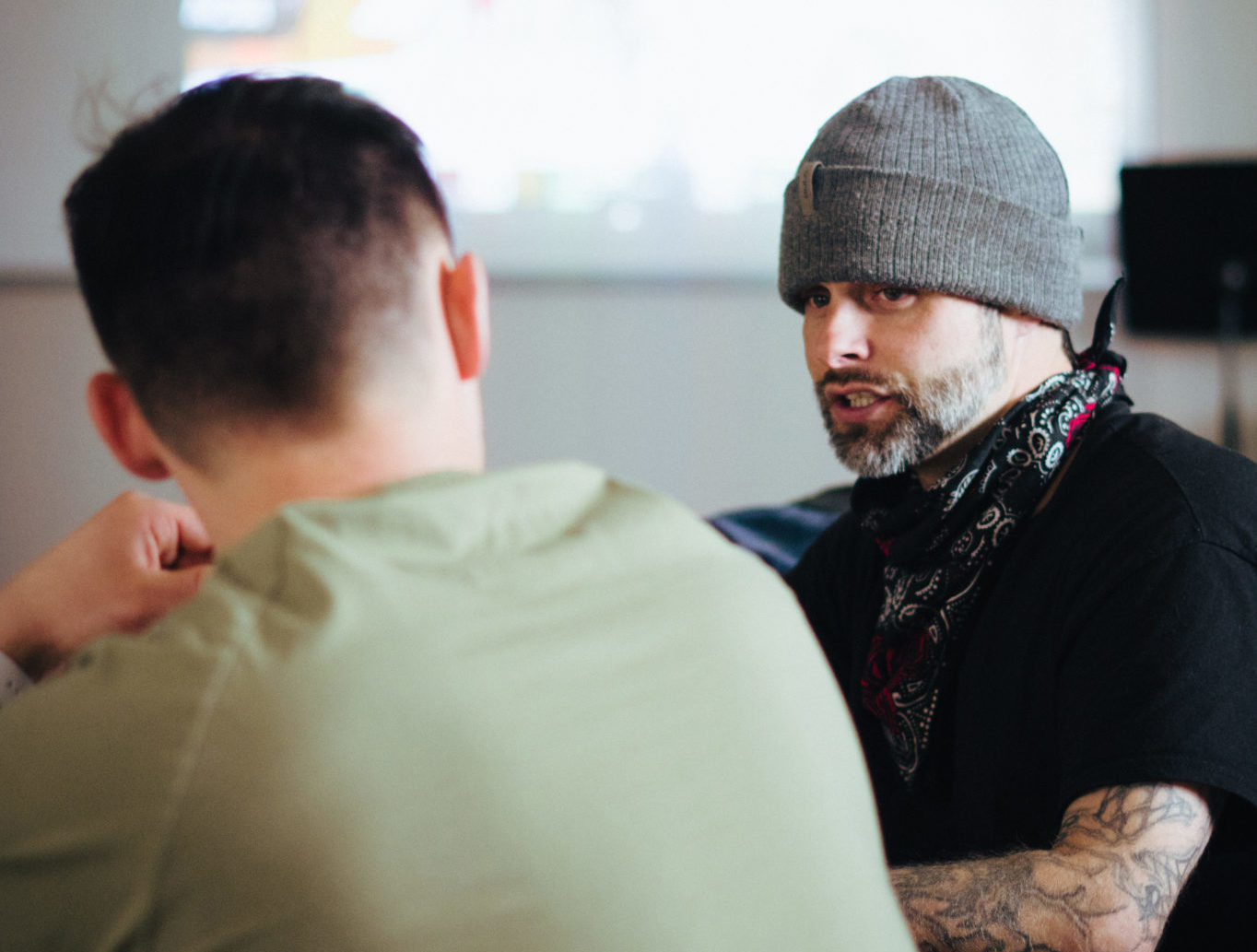By Rhea Maze
Photos by Chase Baker
Flexible. Tenacious. Kind.
Those are the words the trailblazing cohort of third-year medical students chose to describe themselves as they navigated their clinical rotations in the Northern Colorado medical community amid a pandemic.
They arrived in Fort Collins in June 2020 to complete their clinical training with the University of Colorado School of Medicine at Colorado State University and spearhead service-learning projects. Rather than be disappointed by the unique challenges of a pandemic education, they seized the real-world experience and created a community-focused culture to pass on to the incoming class.



Service learning is on the syllabus at the medical school campus at CSU. Emily Wolverton, Sophia Wolfe, and Madison Harrison deliver STEM education to K-12 students at Neighbor to Neighbor.
People first
“Traditional medical school for the past 100 years has been two years of didactic basic sciences followed by two years in the clinic – we are totally blowing that up,” said Nicole Kelp, interim chair of the Medical Science Content Directors for the CU School of Medicine and an assistant professor in CSU’s Department of Microbiology, Immunology, and Pathology.
The University of Colorado School of Medicine at Anschutz is in the midst of innovative curriculum reform which will be implemented at both campuses. From case-based instruction centered on body systems to multiple faculty and physicians providing expertise during class sessions, the students will learn about the integrated care of a patient from their very first day.
“The traditional silos of biochemistry, anatomy, etc., are all gone,” said Greg Amberg, director of the medical school campus at CSU’s basic science curriculum and a professor in the Department of Biomedical Sciences. “We are going to be looking at the big picture from the very beginning.”
The small cohort size and new instructional format allow faculty and students to forge meaningful relationships throughout their education and for students to fully immerse in the practice of medicine and patient care. The students are also paired with physician mentors through a coaching program to help them succeed, maintain their well-being, and pursue a specialty that is the best match for them.
“It’s been phenomenal to see the medical community embrace the concept of this new school,” said Amy Reppert, the clinical years director for the medical school campus at CSU and a general and acute care surgeon with UCHealth. “To have close to 300 volunteer physician faculty across different specialties is unprecedented – these are busy, busy clinicians who have welcomed these students into the medical community and recognized the importance of educating the future of medicine in a novel way.”
One world, many paths to service
Among many lessons learned from COVID-19 is the reminder that health care cannot occur in a vacuum.
“The only way to solve big public health problems is to consider the whole planet – people, plants, animals, and the environment,” said Anuja Riles, director of the One Health and Society program at the medical school campus at CSU and a pediatrician with Banner Health. “We cannot do it in the silo of human medicine, and the pandemic has really shown that.”
The One Health and Society pillar of the new curriculum encompasses a wide range of opportunities for students at the medical school campus at CSU to engage in research, professional development, and collaborations with groups across campus. It includes instruction in population health, ethics, communication, issues around social justice and social determinants of health, and other areas crucial for physicians to know that aren’t directly related to the clinical medicine part of medical school. These concepts, built in from the beginning, include continuous involvement in service learning.
Service projects currently underway include work with Respite Care Inc., where students are tackling pandemic-induced access and programming issues facing children who cannot be served by traditional school or day care; the city of Fort Collins Healthy Homes program, where students are helping residents improve their indoor air quality; and the Street Dog Coalition, where students are improving health care access for homeless pet owners.
“Interviewing potential medical students for this program has been very inspiring: they are enthusiastic and believe in justice and advocacy. They are the next generation of doctors.” -Anuja Riles
Third-year medical students Emily Wolverton, Sophia Wolfe, and Madison Harrison initiated a monthly education program with the nonprofit organization Neighbor to Neighbor to help address the STEM achievement gap facing low-socioeconomic status K-12 students. “We have a variety of activities planned for these kids,” Wolverton said. “From helmet safety to dental hygiene to how to grow a plant and understand the water cycle.”
At Harvest Farm, third-year medical students Chayce Weaver and John-Michael Benson are delivering health education to men recovering from addiction and planning an annual health fair to help improve their health literacy and provide them with a basic checkup. “Our hope is that this will give them a baseline understanding of the status of their own general health and empower them to establish a relationship with a primary care physician,” Weaver said.
Other projects in the works include a collaboration to better meet the health care needs of migrant seasonal farmworkers and a partnership with CSU’s One Health Institute and the city of Fort Collins to launch a sustainable housing initiative.


At Harvest Farm, medical school student Chayce Weaver delivers health education to men recovering from addiction. “Our hope is that this will give them a baseline understanding of the status of their own general health and empower them to establish a relationship with a primary care physician,” Weaver said.
The next generation
As they prepare to wrap up their clinical year in the Northern Colorado medical community and return to CU’s Anschutz Medical Campus, the third-year students are proud of what they’ve helped establish for the incoming class.
“It was hard at first, when there were PPE shortages and we were being pulled out of surgeries,” said Weaver. “But we quickly got back to business as usual, and it’s been very interesting to see the pandemic medical decision-making process in action.”
“They are gaining skills in crisis management and learning about a novel disease process that presents new challenges every day,” said Reppert, the clinical years director. “It has required extreme flexibility on the part of the students and the educators as things change at a moment’s notice, yet time and time again, they’ve risen to the challenge.”
When students apply to the CU School of Medicine, they can indicate their interest in also applying to the medical school campus at CSU. The program aims to start small but could accommodate up to 48 students per class.
“Interviewing potential medical students for this program has been very inspiring,” said Riles, director of the One Health and Society program. “They are enthusiastic and believe in justice and advocacy. They are the next generation of doctors.”